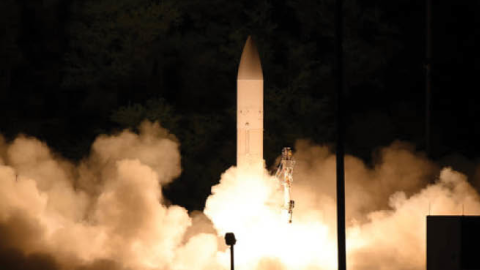The USS Ronald Reagan is tied up in the Japanese port of Yokosuka: Two of her crew have tested positive for COVID-19. USS Theodore Roosevelt, the other U.S. aircraft carrier in the West Pacific, is pier side at Guam with a skeletal crew aboard after 70 of her crew tested positive (this number has now grown to nearly 300). Until both ships can safely return to sea, U.S. deterrence and power projection abilities in the West Pacific are under great strain.
By coincidence, on March 19, the Navy successfully tested a major part of its hypersonic missile program, the missile’s glide body which is designed to carry conventional weapons. Development of hypersonic missiles would not only provide valuable information about how to defend against the hypersonic missiles that Russia claims it possesses and China is developing. It would also be an effective instrument in convincing these and other potential foes that it would be foolish to take advantage if U.S. naval forces are, for whatever reason, unable immediately to respond to crises.
Hypersonic weapons describe a family of delivery systems that travel at between Mach 5 and Mach 10—that is, at between one and two miles per second. In comparison, the U.S. Tomahawk flies at subsonic speeds, at around Mach 0.7—some 550 miles per hour. Tomahawk missiles were used in 2017 following the Syrian government’s chemical attacks and could reach a target 600 miles distant in about an hour; a hypersonic weapon could strike the same target in ten minutes.
Read the full article in "The American Interest()":2020



















